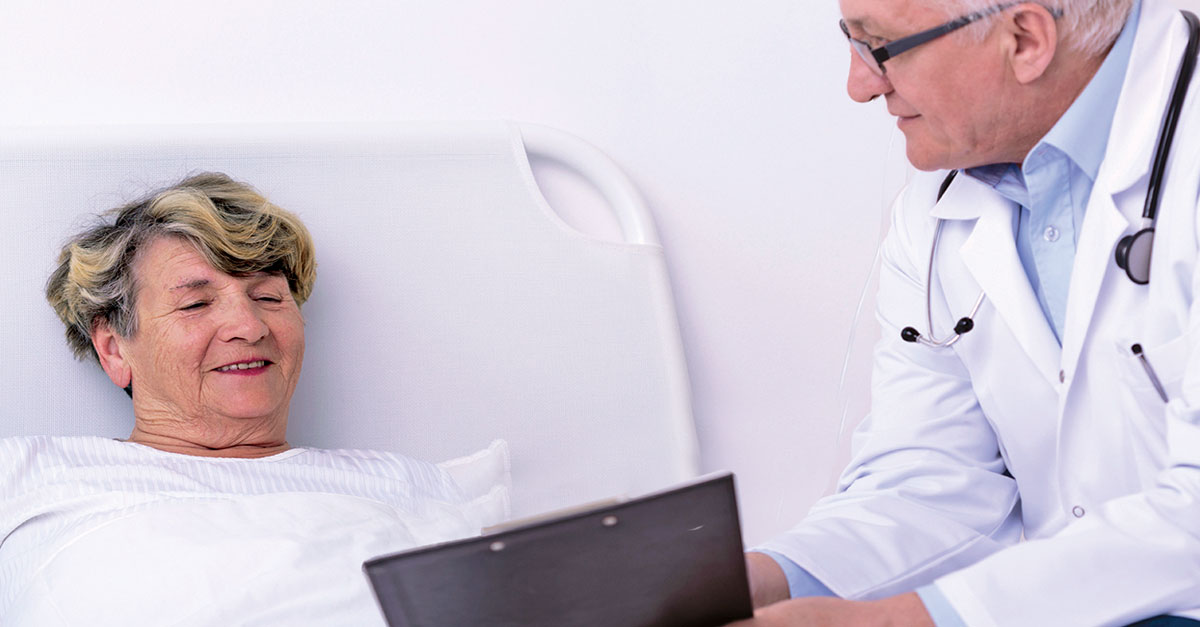Not all procedures give the same level of protection…
If you’re age 50 or older, chances are you’ve had a colonoscopy—and maybe more than one. If so, you’ve taken a crucial step in protecting your health.
Why this test is so important: It’s estimated that if every person age 50 and older had a colonoscopy, 64% of people with colorectal cancer would have never developed the disease.
But since you are going to the trouble to get this test (and we all know the bowel-cleansing prep is no picnic), then it also makes sense to make sure you’re getting the best possible screening. How to ensure that you get the maximum cancer protection from your colonoscopy…
HOW GOOD IS YOUR DOCTOR?
One of the most important aspects of a colonoscopy is the doctor’s ability to detect a type of polyp called an adenoma—the doctor’s so-called “adenoma detection rate” (ADR). This varies widely depending on the doctor’s skill.
If your doctor has a low ADR, you’re more likely to get colon cancer before your next colonoscopy. Gastroenterologists are more likely to have good ADRs than primary care physicians and general surgeons who might perform colonoscopies, but there’s a wide range of performance within each group.
Precisely defined, a doctor’s ADR is the percentage of screening colonoscopies in patients age 50 or older during which he/she detects one or more adenomas. My advice: Look for a doctor with an ADR of 20% or higher in women and 30% or higher in men (who have more adenomas)…or a “mixed-gender” rate of 25% or higher—in other words, the doctor detects at least one adenoma in 25% of the screening colonoscopies he conducts.
Startling recent finding: A 10-year study published in The New England Journal of Medicine evaluated more than 300,000 colonoscopies conducted by 136 gastroenterologists—and found that for every 1% increase in ADR, there was a 3% reduction in the risk of developing colorectal cancer before the next colonoscopy. This means that having your colonoscopy performed by a doctor with a high ADR (as described earlier) is a must for optimal screening. But how does a patient ask about his doctor’s ADR without seeming to question the physician’s competence?
My advice: Ask about your doctor’s ADR on the phone, during the colonoscopy scheduling process, when you are talking to an administrator or a nurse. If that person doesn’t know, request that someone get back to you with the number. That will make your query less confrontational.
However: Even your doctor may not know his own ADR. Monitoring of ADRs is endorsed by several professional medical societies, such as the American Society for Gastrointestinal Endoscopy and the American College of Gastroenterology, but there is no law mandating that doctors must track it. Or your doctor may refuse to disclose his ADR—a response you should find concerning. If you don’t get the information you need from your doctor, it’s probably a good idea to find a new one.
Also important: Make sure your colonoscopy is being performed with a high-definition colonoscope, the current state-of-the-art in colonoscopy. Inquire about this when you ask about a doctor’s ADR.
A BETTER BOWEL PREP
Another key to a truly preventive colonoscopy is the preparation. Before the procedure, a patient drinks a defecation-inducing liquid (prep) that cleanses the rectum and colon of stool so that the doctor can clearly see the lining. In some patients, a four-liter prep (about one gallon), or even more, is best for optimal cleansing. If you don’t have a condition associated with slow bowel motility, such as chronic constipation, or use constipating medications such as opioids, you may be eligible for one of the regimens that requires only two or three liters of fluid. (A pill preparation is also available, but it is seldom used because it can cause kidney damage.) Ask your doctor what regimen will give you the best combination of excellent cleansing and tolerability.
A common mistake: Many people think that they can drink the prep one to two days before the procedure and then drink nothing but clear fluids (such as Gatorade, apple juice or water) until the day of the colonoscopy.
But even during the prep, the small intestine (the section of bowel after the stomach and before the colon) continues to produce chyme, a thick, mucousy secretion that sticks to the walls of the ascending colon—so that seven to eight hours after drinking the prep the colon is no longer completely clean.
Best: A split prep, with half the prep ingested the day before the procedure and half ingested four to five hours before (the middle of the night when the colonoscopy is scheduled for the morning…or the morning when the colonoscopy is scheduled for the afternoon). Scientific evidence: Split preparation improves ADR by 26%, according to a study in Gastrointestinal Endoscopy.
Also helpful: Drinking the prep can be difficult, even nauseating. How to make it more palatable…
Chill the liquid thoroughly, and drink it with a straw. Follow each swallow with ginger ale or another good-tasting clear liquid. Suck on a clear menthol lozenge after you drink the prep. And if you throw up the prep, wait 30 minutes (until you feel less nauseated) and then continue drinking the prep as instructed—it can still work.
Several recent studies have found that eating a fiber-free diet all or part of the day prior to colonoscopy allows for better cleansing of the colon. Some doctors advise avoiding high-fiber foods such as corn, seeds and nuts for about a week before a colonoscopy. Ask your doctor what he advises for you.


